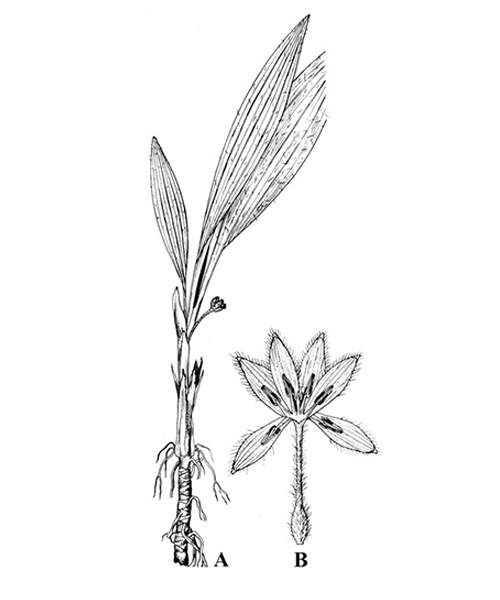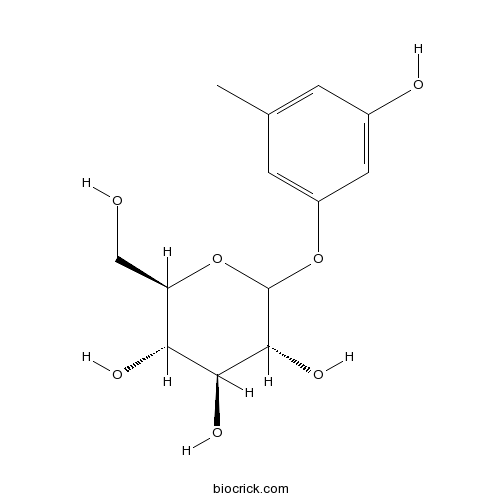Curculigo orchioides
Curculigo orchioides
1. The products in our compound library are selected from thousands of unique natural products; 2. It has the characteristics of diverse structure, diverse sources and wide coverage of activities; 3. Provide information on the activity of products from major journals, patents and research reports around the world, providing theoretical direction and research basis for further research and screening; 4. Free combination according to the type, source, target and disease of natural product; 5. The compound powder is placed in a covered tube and then discharged into a 10 x 10 cryostat; 6. Transport in ice pack or dry ice pack. Please store it at -20 °C as soon as possible after receiving the product, and use it as soon as possible after opening.

Natural products/compounds from Curculigo orchioides
- Cat.No. Product Name CAS Number COA
-
BCN2815
Orcinol gentiobioside164991-86-0
Instructions

-
BCN4916
Sakakin21082-33-7
Instructions

-
BCN4406
Curculigoside85643-19-2
Instructions

A Network Pharmacology Approach to Determine the Active Components and Potential Targets of Curculigo Orchioides in the Treatment of Osteoporosis.[Pubmed: 29074841]
BACKGROUND Osteoporosis is a complex bone disorder with a genetic predisposition, and is a cause of health problems worldwide. In China, Curculigo orchioides (CO) has been widely used as a herbal medicine in the prevention and treatment of osteoporosis. However, research on the mechanism of action of CO is still lacking. The aim of this study was to identify the absorbable components, potential targets, and associated treatment pathways of CO using a network pharmacology approach. MATERIAL AND METHODS We explored the chemical components of CO and used the five main principles of drug absorption to identify absorbable components. Targets for the therapeutic actions of CO were obtained from the PharmMapper server database. Pathway enrichment analysis was performed using the Comparative Toxicogenomics Database (CTD). Cytoscape was used to visualize the multiple components-multiple target-multiple pathways-multiple disease network for CO. RESULTS We identified 77 chemical components of CO, of which 32 components could be absorbed in the blood. These potential active components of CO regulated 83 targets and affected 58 pathways. Data analysis showed that the genes for estrogen receptor alpha (ESR1) and beta (ESR2), and the gene for 11 beta-hydroxysteroid dehydrogenase type 1, or cortisone reductase (HSD11B1) were the main targets of CO. Endocrine regulatory factors and factors regulating calcium reabsorption, steroid hormone biosynthesis, and metabolic pathways were related to these main targets and to ten corresponding compounds. CONCLUSIONS The network pharmacology approach used in our study has attempted to explain the mechanisms for the effects of CO in the prevention and treatment of osteoporosis, and provides an alternative approach to the investigation of the effects of this complex compound.
New phenolic glycosides from Curculigo orchioides and their xanthine oxidase inhibitory activities.[Pubmed: 28916257]
None
Osteoblast cell membrane chromatography coupled with liquid chromatography and time-of-flight mass spectrometry for screening specific active components from traditional Chinese medicines.[Pubmed: 28884956]
A method using osteoblast membrane chromatography coupled with liquid chromatography and time-of-flight mass spectrometry was developed to recognize and identify the specific active components from traditional Chinese medicines. Primary rat osteoblasts were used for the preparation of the stationary phase in the cell chromatography method. Retention components from the cell chromatography were collected and analyzed by liquid chromatography with time-of-flight mass spectrometry. This method was applied in screening active components from extracts of four traditional Chinese medicines. In total, 24 potentially active components with different structures were retained by osteoblast cell chromatography. There were five phenolic glucosides and one triterpenoid saponin from Curculigo orchioides Gaertn, two organic acids and ten flavonoids from Epimedium sagittatum Maxim, one phthalide compound and one organic acid from Angelica sinensis Diels, and two flavonoids and two saponins from Anemarrhena asphodeloides Bunge. Among those, four components (icariin, curculigoside, ferulaic acid, and timosaponin BII) were used for in vitro pharmacodynamics validation. They significantly increased the osteoblast proliferation, alkaline phosphatase activity, levels of bone gla protein and collagen type 1, and promoted mineralized nodule formation. The developed method was an effective screening method for finding active components from complex medicines that act on bone diseases.
An O-acetyl-glucomannan from the rhizomes of Curculigo orchioides: Structural characterization and anti-osteoporosis activity in vitro.[Pubmed: 28821095]
Osteoporosis is characterized by a reduction in bone mass and bone mineral density, which weakens the bone. Due to the side effects associated with drugs that are currently used to treat this disease, an increasing number of studies have focused on the research of effective ingredients derived from natural products. In particular, polysaccharides extracted from Chinese herbal medicines have received increasing attention. In this study, we isolated a homogeneous polysaccharide (COP90-1) from the dried rhizomes of Curculigo orchioides, a famous traditional Chinese medicine that is widely used in China, and determined its structure using the combined methods of chemical and spectral analyses. In addition, its effects on the proliferation and differentiation of primary mouse osteoblasts were assessed. The results showed that COP90-1 can effectively promote the proliferation and differentiation of primary osteoblasts in vitro. Additional studies are warranted to study the effects of this compound in vivo.
Curculigoside augments cell-mediated immune responses in metastatic tumor-bearing animals.[Pubmed: 27228189]
A positive modulation of immune system is necessary for preparing the body to fight against malignant tumor cells. In the present study, the stimulatory effect of Curculigoside on cell-mediated immune response against the metastasis of B16F10 melanoma cells was analyzed in C57BL/6 mice. Curculigoside is a phenolic glucoside present in the plant Curculigo orchioides Gaertn. (Family - Amaryllidaceae). Administration of Curculigoside enhanced the natural killer (NK) cell activity, antibody-dependent cell-mediated cytotoxicity and complement-mediated cytotoxicity in metastatic tumor-bearing animals, when compared to the untreated control animals. The compound was also found to be effective in reducing the levels of proinflammatory cytokines such as TNF-α, IL-1β, IL-6 and GM-CSF during metastasis. Besides these, levels of TH1 cytokines, such as IL-2 and IFN-γ, were significantly enhanced (p < 0.001) by Curculigoside administration and thereby reduces the metastatic lung colony formation along with an increased lifespan of the experimental animals. These studies provide an evidence for the stimulation of cell-mediated immune responses by Curculigoside against B16F10-induced metastatic tumor progression in experimental animals.
Curculigoside regulates proliferation, differentiation, and pro-inflammatory cytokines levels in dexamethasone-induced rat calvarial osteoblasts.[Pubmed: 26550143]
Curculigoside (CCG), one of the main bioactive phenolic compounds isolated from the rhizome of Curculigo orchioides Gaertn., is reported to prevent bone loss in ovariectomized rats. However, the underlying molecular mechanisms are largely unknown. Therefore, we investigated the effects of CCG on proliferation and differentiation of calvarial osteoblasts and discussed the related mechanisms.
Curculigo orchioides Gaertn Effectively Ameliorates the Uro- and Nephrotoxicities Induced by Cyclophosphamide Administration in Experimental Animals.[Pubmed: 26424815]
Background Curculigo orchioides Gaertn is an ancient medicinal plant (Family: Amaryllidaceae), well known for its immunomodulatory and rejuvenating effects. Cyclophosphamide (CPA) is an alkylating agent widely used for treating a variety of human malignancies, but associated with different toxicities too. Our previous reports regarding the hemoprotective and hepatoprotective effects of the plant against CPA toxicities provide the background for the present study, which is designed to analyze the ameliorative effect of the methanolic extract of C orchioides on the urotoxicity and nephrotoxicity induced by CPA. Methods CPA was administered to male Swiss albino mice at a single dose of 1.5 mmol/kg body weight to induce urotoxicity after 5 days of prophylactic treatment with C orchioides extract (20 mg/kg body weight). Mesna (2-mercaptoethanesulfonate) was used as a control drug. Serum, tissue, and urine levels of kidney function markers and antioxidant levels were checked along with the serum cytokine levels. Results The plant extract was found to be effective in ameliorating the urotoxic and nephrotoxic side effects of CPA. Upregulation of serum interferon-γ and interleukin-2 levels were observed with C orchioides treatment, which was decreased by CPA administration. Besides these, serum tumor necrosis factor-α level was also downregulated by C orchioides treatment. Conclusion Curculigo orchioides was found to be effective against the CPA-induced bladder and renal toxicities by its antioxidant capability and also by regulating the pro-inflammatory cytokine levels.


